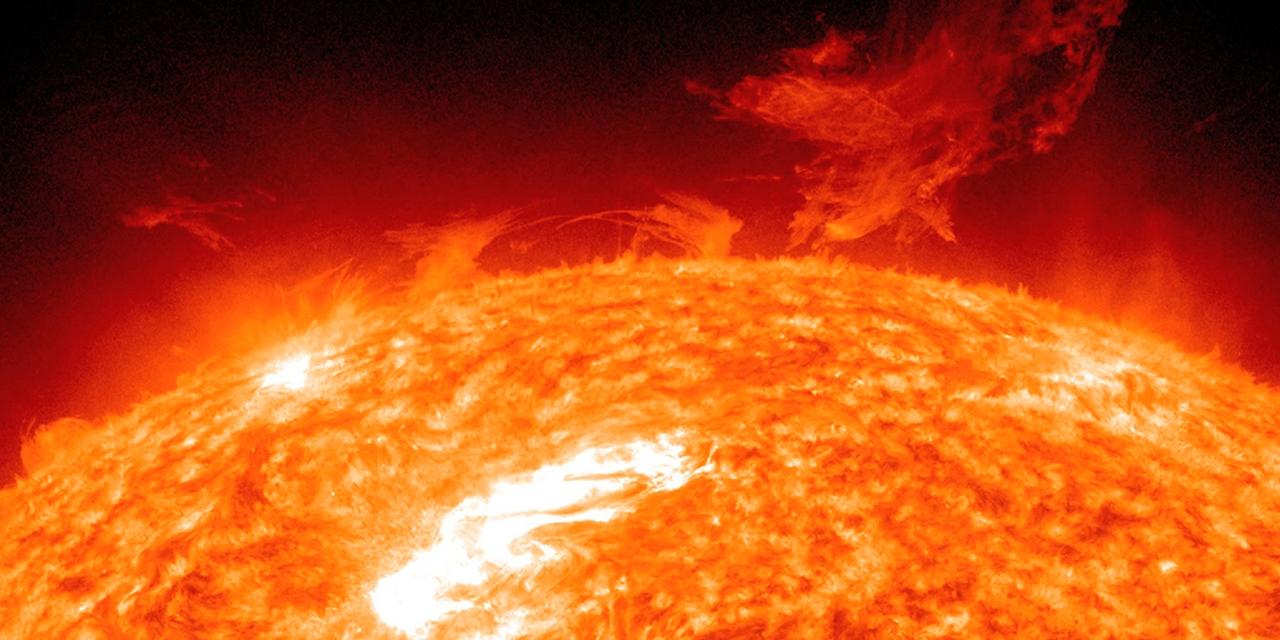In the vast cosmic orchestra, the Sun takes center stage as the cosmic maestro orchestrating the symphony of Earth's climate. Its radiant energy, gravitational pull, and cyclical variations weave a complex tapestry that shapes the planet's climate dynamics. In this exploration, we unravel the intricate influence of the Sun on Earth's climate, deciphering the cosmic cues that govern our planet's atmospheric ballet https://climatempo.com/
Solar Energy: The Lifeblood of Earth's Climate
The Solar Spectrum
At the heart of the Sun's influence lies its radiant energy. The Sun emits a spectrum of electromagnetic radiation, ranging from ultraviolet to visible light and infrared. Earth intercepts this solar energy, and its interaction with the atmosphere sets in motion the complex processes that define climate patterns.
Solar Radiation and Heat Distribution
Solar radiation heats the Earth's atmosphere and surface, creating temperature variations across the globe. The equator receives more direct sunlight, leading to warmer temperatures, while polar regions experience less direct sunlight, resulting in cooler climates. This distribution of solar heat is a fundamental driver of atmospheric circulation and ocean currents.
Sunspots and Solar Cycles: The Sun's Rhythmic Dance
Sunspots as Cosmic Pulsations
Sunspots, dark patches on the Sun's surface, are indicators of its dynamic activity. These magnetic disturbances influence solar radiation levels and can impact Earth's climate. Research suggests that periods of increased sunspot activity correspond with slightly warmer temperatures on Earth, emphasizing the Sun's rhythmic dance as a factor in climate variability.
Solar Cycles and Climate Fluctuations
The Sun operates on an approximately 11-year cycle, marked by fluctuations in sunspot activity known as the solar cycle. This cycle influences solar irradiance, or the amount of solar energy reaching Earth. While the impact on climate is subtle, studies suggest that solar cycles contribute to variations in temperature and weather patterns over extended periods.
Solar Influence on Atmospheric Circulation: The Jet Streams and Beyond
Jet Streams: Atmospheric Maestros
The Sun's uneven heating of the Earth's surface sets in motion atmospheric circulation patterns, and the jet streams emerge as influential conductors. These high-altitude, fast-flowing air currents guide weather systems and influence storm tracks. The Sun's role in driving temperature gradients between the equator and poles shapes the behavior of these atmospheric maestros.
Hadley Cells, Ferrel Cells, and Polar Cells
The Sun's influence extends to the creation of Hadley Cells near the equator, Ferrel Cells in mid-latitudes, and Polar Cells near the poles. These atmospheric circulation cells result from the Sun's uneven heating of the Earth's surface. They play a crucial role in redistributing heat and moisture, influencing regional climate patterns.
Solar Variability and Climate Change: Unraveling the Threads
Solar Irradiance Variations
While the Sun's influence on Earth's climate is substantial, its variability is not the primary driver of recent climate change. Studies show that the changes in solar irradiance over the past few decades have been relatively small compared to the warming observed on Earth. Human activities, particularly the increase in greenhouse gas emissions, remain the dominant force shaping the current climate trajectory.
Long-Term Solar Changes and Ice Ages
Over geological timescales, variations in Earth's orbit and axial tilt, known as Milankovitch cycles, interact with solar influences to drive long-term climate changes. These variations contribute to the onset of ice ages and interglacial periods. While these astronomical factors set the stage, the amplification of climate shifts involves intricate feedback mechanisms within Earth's climate system.
Solar Influence on Oceanic Dynamics: The Thermal Engine
Solar Heating and Oceanic Circulation
The Sun's influence extends beneath the ocean's surface, acting as a thermal engine that drives oceanic circulation. Solar heating at the equator warms surface waters, initiating the movement of ocean currents. These currents play a crucial role in redistributing heat around the globe, influencing regional climates and contributing to phenomena like El Niño and La Niña.
Solar-Induced Climate Patterns
Solar-induced variations in oceanic circulation can influence climate patterns, leading to phenomena like the Pacific Decadal Oscillation (PDO) and the Atlantic Multidecadal Oscillation (AMO). These oscillations, influenced by solar-driven changes in sea surface temperatures, have far-reaching impacts on weather patterns and climate conditions.
Solar Solutions: Harnessing the Sun for Sustainable Practices
Solar Energy as a Sustainable Resource
Beyond its influence on climate dynamics, the Sun offers a tangible solution to mitigate environmental impact. Solar energy, harnessed through photovoltaic systems, presents a clean and sustainable alternative to traditional energy sources. As societies embrace solar solutions, they contribute to reducing greenhouse gas emissions and fostering a more sustainable future.
Solar Technologies and Climate Innovation
Advancements in solar technologies, from solar panels to concentrated solar power systems, play a crucial role in climate innovation. These technologies not only harness solar energy for electricity generation but also contribute to reducing dependence on fossil fuels. The Sun, as an eternal source of renewable energy, becomes a beacon guiding humanity toward a more sustainable and climate-friendly future.
Conclusion: Embracing the Cosmic Connection
In the grand cosmic tapestry, the Sun emerges as Earth's celestial conductor, orchestrating the symphony of climate patterns. From the dance of solar cycles to the rhythmic beat of atmospheric circulation, the Sun's influence is pervasive and profound. While anthropogenic factors increasingly shape the contemporary climate narrative, understanding the Sun's role illuminates the intricate threads woven into Earth's climatic ballet. As we navigate the climate challenges of the future, the cosmic connection between Earth and its solar maestro remains a source of both inspiration and responsibility.







